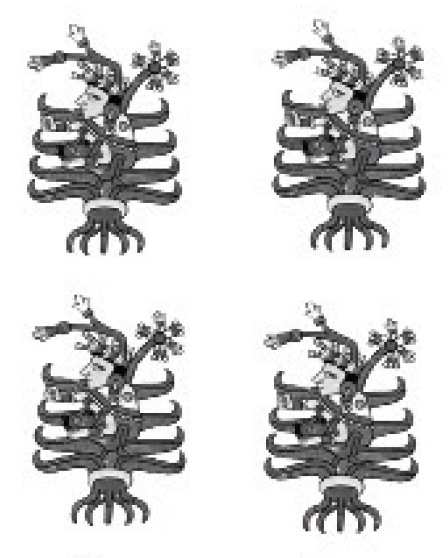Abstract
Pulque is an alcoholic beverage made from the fermented sap of the maguey plant. It is traditional to central Mexico, where it has been produced for millennia. I am interested in the revival of this drink and its relation to the community and social traditions as well as the visual symbols that are contained in contemporary and pre-Hispanic culture. The aim of the project is to show through the links between Pulquerias (where pulque is sold) and art. This project which compromises a series of prints and other objects worked from photographic and video sourced from the Internet of Pulquerías. The prints show in various ways the transitions, the collision, transformations of images of pulque.
This work was meant to be exhibited in June 2020 in a Pulquería in Mexico City. Due to the pandemic, I was left with all the body of work and with no possibilities of exhibiting or showcasing the work physically. New research methods for exhibition had to be found for it be shown. New questions to be answered as it was meant to be exhibited in Mexico where Pulque comes from and how presenting it to a global digital audience would the work have to be developed and new elements added for it to be accessible.
The work had to be now thought as means to produce something digital to go out to the public. I found a space to set the exhibition up and with professional support of a photographer and film artist the project was presented online. All these new elements within the way of presenting the work added new ideas to develop and to study. One of them is how online platforms develop new audiences nationally and internationally and how links can be created through it.
References
Fernández, Justino. 2001. Arte Moderno y Contemporáneo de México, tomo i: El arte del Siglo XX México, Instituto de Investigaciones Estéticas-UNAM.
Fournier García, Patricia, y Lourdes Mondragón Barrios, “Las bebidas mexicanas. Pulque, mezcal y tesgüino”, Arqueología Mexicana núm. 114, pp. 52-59.
Falcón Martínez, G. 2012. «La pulquería como institución. Nacho López», Diario de Campo, (8), pp. 76–83. Disponible en: https://revistas.inah.gob.mx/index.php/diariodecampo/article/view/3312 (Accedido: 23 mayo 2022).
Orford, Jim; Natera, Guillerina; Copello, Alex; Atkinson, Carol;Mora, Jazmin; Velleman, Richard; Crundall, Ian; Tiburcio, Marcela; Templeton, Lorna; Walley, Gwen. 2005. Coping with Alcohol and Drug Problems: The Experiences of Family Members in Three Contrasting Cultures, p.48 ISBN 9781134702732.
Ramírez Rodríguez, Rodolfo. 2007. ’La Representación popular del maguey y el pulque en las artes’ Cuicuilco, (39) pp.115-149. Disponible en: http://redalyc.uaemex.mx/src/inicio/ArtPdfRed.jsp?iCve=35111319006.
Ramírez Rodríguez, Rodolfo. 2004. El maguey y el pulque: Memoria y tradición convertidas en historia, 1884-1993, tesis de licenciatura en historia, Facultad de Filosofía y Letras-Benemérita Universidad Autónoma de Puebla.
Ramírez, Armando. 1991. “La pulquería”, en Korenbrot, Israel, El grantinacal, México, Dirección General de Culturas Populares-conaculta, pp.25-26.
Rivera, Diego. 1926. “Pintura mexicana popular [pulquerías]”, en Mexican Folkways, vol. ii, núm. 4, México, octubre-noviembre.

This work is licensed under a Creative Commons Attribution 4.0 International License.
Copyright (c) 2023 Erika Servin
